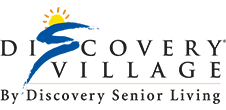Active living promotes better physical and mental health for older adults, but challenges often limit participation in activities. Senior activity barriers such as accessibility, health conditions, social isolation, financial concerns, and fear of injuries are common. Each presents unique hurdles that communities and families must address. This post explores key barriers older adults face in staying active and offers solutions to overcome them effectively.
Lack of Accessible Activities in the Community
Communities often lack activities tailored to meet the mobility and comfort levels of older adults. Public spaces may not accommodate wheelchairs or walkers, making them difficult for participation. Recreation centers may not prioritize age-friendly programs, limiting opportunities to engage in safe and enjoyable physical activities.
Transportation issues compound these problems. Limited public transit options or inaccessible vehicles leave many residents unable to reach activity hubs. Addressing these issues requires communities to invest in inclusive spaces, transportation, and diverse programs that consider the needs of older adults.
Health Challenges That Limit Physical Movement Options
Chronic conditions such as arthritis or cardiovascular disease significantly reduce physical mobility for older adults. These issues create discomfort or pain, discouraging them from participating in fitness or recreational activities. A lack of guidance from trained professionals further exacerbates this situation.
Programs designed to provide low-impact exercises, such as yoga or aquatic aerobics, offer practical solutions. Collaborating with medical professionals ensures tailored approaches that align with physical limitations. This balance encourages safe participation and sustained activity without worsening health conditions.
Social Isolation Affecting Motivation to Stay Active
Older adults who live alone or far away from loved ones often experience social isolation. Limited interaction with peers leads to decreased motivation for group activities or outdoor engagement. This emotional barrier can discourage older adults from seeking opportunities to remain physically active.
Creating strong social networks within retirement communities offers a vital solution. Programs that foster friendships and provide structured group activities can rekindle enthusiasm. Support systems help participants feel valued and included, motivating them to adopt and maintain active lifestyles.
Financial Constraints Preventing Participation in Programs
Many older adults face financial barriers that hinder access to paid fitness programs or recreational activities. Limited income or fixed budgets make memberships, equipment, or transportation unaffordable. Financial challenges often restrict their ability to invest in long-term health.
Affordable or free community programs can alleviate these constraints. Subsidized classes, grants, or sliding-scale fees ensure equitable access for all participants. Providing necessary equipment or transportation at no additional cost further enhances accessibility, enabling older adults to prioritize health.
Fear of Injuries While Engaging in Activities
Fear of falls or injuries prevents many older adults from engaging in physical activities. Limited confidence in their balance or strength leads to avoidance, increasing sedentary behavior. This hesitation often stems from inadequate supervision or lack of safety measures in group activities.
Encouraging activities in supervised settings alleviates these fears. Professionals trained to address fall prevention can design safe environments, reducing risk while building confidence. Modifications such as padded flooring or assistive equipment enhance safety, enabling older adults to participate without hesitation.
Join Our Inclusive Independent Living Community with Supportive Services
At our supportive independent living community, we foster a vibrant environment that prioritizes accessibility and inclusion, helping you overcome senior activity barriers. Our encouraging senior living services include customized programs designed to fit the needs of every resident, focusing on wellness and connection. Discover how we make staying active engaging, safe, and fulfilling. Let us support you in embracing a healthier, more vibrant retirement today!







